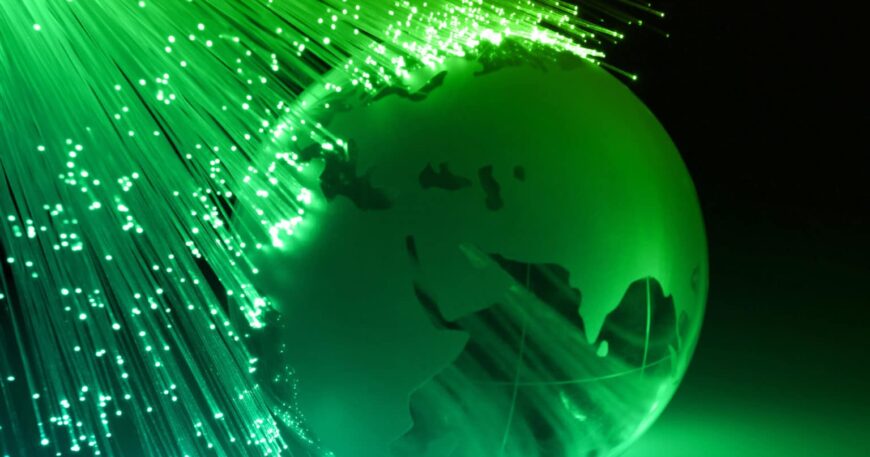When it comes to protecting the atmosphere, FTTH is a good choice. This is because modern broadband provision with fiber optic networks requires much less energy in comparison with other technologies. The carbon footprint speaks for fiber optics.
Is that a good question?
You will probably ask whether it is really important to examine the carbon footprint of broadband networks. You may be afraid that this is about the greenwashing of a major industry. Rumors are circulating that the Internet and data transmission are climate-damaging energy guzzlers.
As a responsible manufacturer of network technology for broadband service, we have taken a close look at this issue. This is because R&M wants to help minimize CO2 emissions quickly and sustainably. We want to give our customers the best possible orientation when they invest in networks.
Broadband networks are currently being expanded all over the world and many new, extended FO networks are being laid. R&M supports and supplies numerous large-scale projects. That’s why the carbon footprint issue definitely plays an important role for us. Current studies and a few facts provide answers.
To the facts
- Broadband networks require electrical energy. Data does not come into our homes from the cloud under its own steam. Access networks account for 70 % to 80 % of the power consumption in this sector.
- There are quite a few electrical systems working around the clock between the central office of the network operator and the subscriber. These include routers, switches, and transceivers. All electronic equipment ultimately contributes to the emission of greenhouse gases and must therefore be geared towards energy efficiency.
- Telecommunications services today already consume two to three percent of the energy generated worldwide. Data traffic is increasing, for example, through video streaming, online gaming, and teleworking. Data transmission can account for up to 80 % of the power consumption of video streaming. People have fun watching YouTube videos or Netflix movies. But it can’t be done without electricity.
- The energy efficiency of the various transmission technologies and media (fiber optic, copper, cellular phone networks) differs considerably. There is a big difference between transmitting light signals via fiber optics, transmitting electrical signals via copper cable, or high-frequency signals via an antenna. In terms of data transmission, 1 kg of glass is as powerful as 1000 kg of copper.
- Based on energy consumption per bit rate, copper-based broadband networks (VDSL2 vectoring, super vectoring) consume up to seventeen times more electricity than full-fiber networks. This is according to a report from the German broadband association BREKO from January 2021. The industry consultants at WIK Consult have calculated that telecom companies can save 60 % of energy costs by switching off the copper networks.
- One result of the German research project Green Cloud Computing in September 2020 confirms: «CO2 emissions are at their lowest when HD video is streamed to the home via a fiber optic connection». Each hour of video streaming produces two grams of CO2. The value refers to the effectiveness of the data transmission and the data center where the video is stored. In the case of copper cables (VDSL transmission), the figure is four grams and for 5G radio five grams of CO2 per hour.
Clear result
From R&M’s point of view, the situation is clear: When it comes to protecting the atmosphere, Fiber to the Home is a good choice.
Anyone who opts for fiber optic networks is opting for the lowest possible power consumption in data transmission and thus the lowest possible CO2 emissions.
Data traffic does not work entirely without electricity. But we can all opt for devices that are as energy-efficient as possible and have a climate-friendly power supply.
In addition, the BREKO study adds the following: Fiber optic networks are more reliable than copper-based alternatives with fewer service interruptions, fewer failures, and lower maintenance costs. This also saves energy.
One more thing
Fiber optics are, in a way, sustainable by nature. They are made of silicate, which is available in virtually unlimited quantities. The raw material can be extracted and recycled at a reasonable cost. Optical fibers are light and thin. This means they can be transported with minimal effort.
R&M also supports network operators with solutions that ensure sustainability and high efficiency right from the planning and construction phase.
I would like to invite you to engage in an in-depth debate on sustainability. Let’s swap ideas on how to constantly improve the carbon footprint of the telecommunications and network industry. Write your comment at the bottom of the page.






